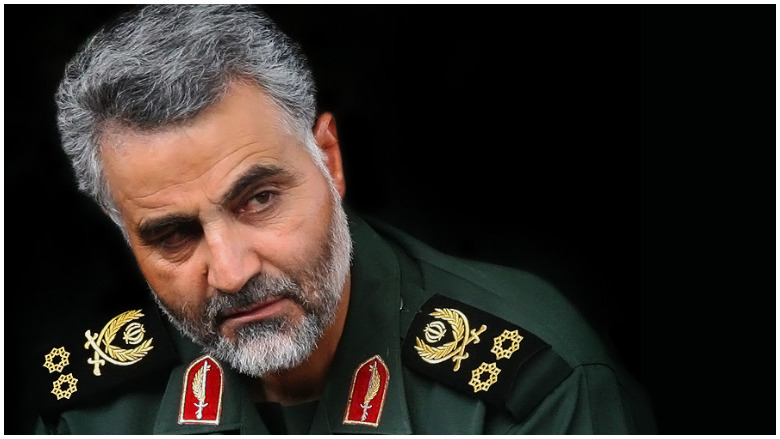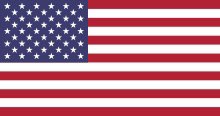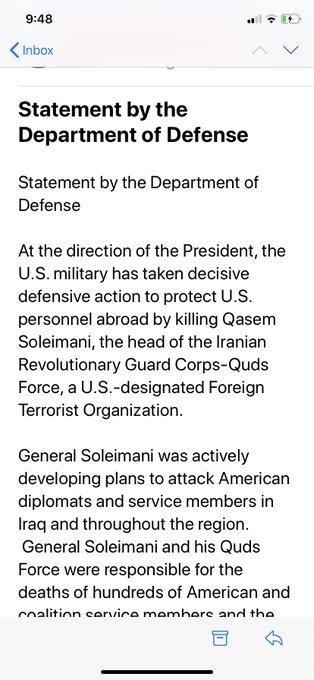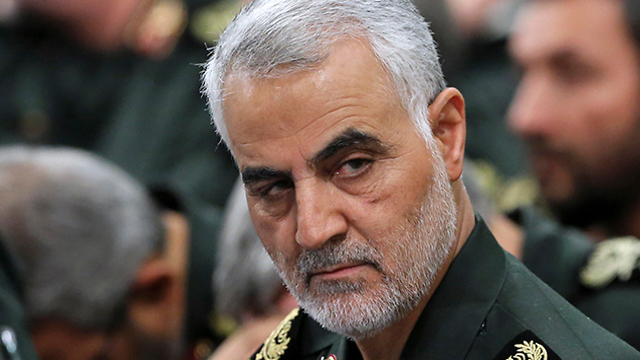
Wikimedia Commons Qassim Soleimani
Qasem Soleimani, an Iranian Major-General, head of the elite, powerful Quds force and architect of Iran’s strategy throughout the Middle East, was killed by an U.S. air strike, the U.S. Department of Defense has confirmed, calling the death “decisive defensive action.” The death of the powerful general marks what many experts are calling a potential turning point in the Middle East that is likely to generate retaliation from Iran against the United States.
This was President Trump’s response:
He later elaborated, writing, “General Qassem Soleimani has killed or badly wounded thousands of Americans over an extended period of time, and was plotting to kill many more…but got caught! He was directly and indirectly responsible for the death of millions of people, including the recent large number of PROTESTERS killed in Iran itself. While Iran will never be able to properly admit it, Soleimani was both hated and feared within the country. They are not nearly as saddened as the leaders will let the outside world believe. He should have been taken out many years ago!”
Soleimani’s body was identified by his ring. Iran’s Supreme Leader Ayatollah Ali Khamenei said a “harsh retaliation is waiting” in response.
“At the direction of the President, the U.S. military has taken decisive defensive action to protect U.S. personnel abroad by killing Qasem Soleimani, the head of the Iranian Revolutionary Guard Corps-Quds Force, a U.S.-designated Foreign Terrorist Organization,” the Department of Defense statement read. “General Soleimani was actively developing plans to attack American diplomats and service members in Iraq and throughout the region.”
The statement said that Soleimani and his Quds force “were responsible for the deaths of hundreds of American and coalition service members and the wounding of thousands more. He had orchestrated attacks on coalition bases in Iraq over the last several months — including the attack on December 27th — culminating in the death and wounding of additional American and Iraqi personnel.”
The statement concluded that the United States air strike “was aimed at deterring future Iranian attack plans. The United States will continue to take all necessary action to protect our people and our interests wherever they are around the world.”
However, Congressional response broke down quickly along partisan lines, with some Republicans generally applauding the assassination and Democrats, while indicating that they were no fans of Soleimani, questioning what the president’s plan is if further escalation results.
How powerful was Soleimani? In a 2013 profile story, The New Yorker called Soleimani the “shadow commander” who was “reshaping the Middle East” and “directing Assad’s war in Syria.” At that time, the magazine described the Iranian general as “a small man of fifty-six, with silver hair, a close-cropped beard, and a look of intense self-containment.” The Washington Post dubbed Soleimani Iran’s “most revered military leader.”
According to Haaretz, Soleimani “was considered one of the people closest to Iran’s supreme leader, Ali Khamenei.” He was 61, a father of 5, a former construction worker, and not a religious scholar, Haaretz reports, adding that he ran the Quds force since 1998.
A 2018 article by Ali Soufan for the Combating Terrorism Center at West Point called him “one of Iran’s most popular living people.” His influence was felt throughout the Middle East, as he orchestrated Iran’s strategies in Syria, Iraq and other countries, Soufan wrote.
The New Yorker article says that Soleimani has the blood of American soldiers on his hands; he was known for “assassinating rivals, arming allies, and, for most of a decade, directing a network of militant groups that killed hundreds of Americans in Iraq.” The U.S. Department of the Treasury sanctioned Suleimani.
Tensions were already escalating with the Iran-backed militia attacks on the U.S. embassy in Iraq. Those attacks followed U.S. air raids “against Kataib Hezbollah militia bases” to avenge the death of a U.S. contractor in missile attacks in northern Iraq, according to Jerusalem Post. In contrast, the Obama administration had signed a nuclear deal with Iran.
In 2008, Suleimani texted then U.S. military commander David Petraeus that “he controlled Iran’s policy in Iraq and was outfoxing the Americans,” Daily Beast reports.
Here’s what you need to know:
1. Soleimani’s Convoy Was Hit at Baghdad’s Airport & His Death Was Confirmed by Iranian State Television, Reports Say
According to Reuters, Ahmed al-Assadi, spokesman for Iran-backed militias, said: “The American and Israeli enemy is responsible for killing the mujahideen Abu Mahdi al-Muhandis and Qassem Soleimani.”
Iran has also confirmed the death via state TV. The general’s name is sometimes given as Qasem Soleimani and Qassem Soleimani.
The Iraqi militia spokesman told Reuters that Solemani was killed late on January 2, 2019 when the air strike hit his convoy in Baghdad airport. Killed along with him was Iraqi militia commander Abu Mahdi al-Muhandis, according to the news service.
Experts say the death could dramatically increase tensions with Iran, with President Donald Trump “upping the ante.” The Associated Press declared that the death of the general and others “are a potential turning point in the Middle East” likely to spark “severe retaliation” from Iran against Israel and America.
Earlier in the day, U.S. Defense Secretary Mark Esper released a detailed statement chronicling the American perspective on Iran. “Last Friday, the Iranian-backed militia Kata’ib Hizbollah or KH launched yet another attack against American forces in Iraq, resulting in the death of one American civilian, and injuries to four American service members, as well as two of our partners in the Iraqi Security Forces,” he wrote. “This continues a string of attacks against bases with U.S. forces and Iraqi Security Forces. KH has a strong linkage to the Iranian Revolutionary Guards Quds Force and has received lethal aid, support, and direction from Iran.”
Esper added: “U.S. leaders have repeatedly warned the Iranians and their Shia militia proxies against further provocative actions.”
He detailed how the Americans believe the militia attacks on the U.S. Embassy in Baghdad were backed by Iran, writing, “On Tuesday, December 31st, at the instigation of Shia militias, violent rallies of members of these militias outside the American embassy in Baghdad resulted in damage to exterior entry facilities and buildings at the embassy compound. We know it was Iranian-backed Shia militias because key leaders were spotted in the crowd and some militia members showed up wearing their uniforms and carried the flags of their militia, including KH.”
You can read that full statement here.
Graphic photos circulated on social media, with one showing a man’s hand with ring. Al-Jazeera reported that six other people were also killed in the attack.
Journalist Yashar Ali wrote on Twitter, “There are unconfirmed reports that Qasem Soleimani commander of Qods Force (Iran’s external security agency) has been killed in drone strikes. If true, this will be a major moment in US-Iran relations & Supreme Leader will undoubtedly see this as a major provocation/act of war.”
However, Mike Glenn, a military reporter for the conservative Washington Times and former Army officer, wrote, “I’m a reporter but I was a Soldier for several years and led a platoon of cavalry troops into combat in Iraq. Qassim Solemani was directly responsible for the deaths of scores of American military personnel in Iraq. I’m not sad that he got greased. Not a damn bit.”
2. Soleimani Was Once Called the ‘Most Powerful Operative in the Middle East’
The New Yorker profile in 2013 quotes as a former C.I.A. officer as calling Suleimani “most powerful operative in the Middle East today.” The article describes how Soleimani ran the Quds force, described as powerful and elite and a “branch of the Revolutionary Guard.”
According to The New Yorker, the Quds force was “the sharp instrument of Iranian foreign policy, roughly analogous to a combined C.I.A. and Special Forces” and was named after the Persian word for Jerusalem, which it wants to “liberate.” It works across the Middle East deploying Iran’s influence and trying to grow it.
According to Al-Jazeera, “the rockets destroyed two vehicles carrying ‘high profile guests.'” They had arrived at the airport under escort.
It appeared to be a “targeted strike,” reported Al-Jazeera, which called the deaths “a major turning point in Iraq and the entire Middle East.”
3. Soleimani Was the Son of a Farmer Who Once Worked for a Municipal Water Authority
Soleimani’s early biography was pretty provincial, according to the Soufan article, which says he was born in a mountain village in southeast Iran near the borders of Afghanistan and Pakistan. It’s an area dominated by tribal politicians, and his father, a farmer, once owed the government a lot of money after a “botched land reform” of the Shah.
According to Soufan, Soleimani had to work in construction and abandon school as a teenager to help his family survive as a result and later became a technician with a municipal water authority. The Islamic Revolution in 1978 appears to have sparked his interest in political affairs, Soufan reported.
“He found his calling,” wrote Soufan, starting out as a recruit instructor.
According to Haaretz, Soleimani first joined the Iranian Revolutionary Guards, described as “a military force separate from the army” and fought in the Iran-Iraq war in the 1980s.
U.S. Congressional reaction was swift in response to his death.
Chris Murphy, a U.S. Senator from Connecticut, wrote on Twitter, “Soleimani was an enemy of the United States. That’s not a question. The question is this – as reports suggest, did America just assassinate, without any congressional authorization, the second most powerful person in Iran, knowingly setting off a potential massive regional war?”
Rep. Adam Schiff wrote: “Soleimani was responsible for unthinkable violence and world is better off without him. But Congress didn’t authorize and American people don’t want a war with Iran. All steps must now be taken to protect our forces against the almost inevitable escalation and increased risk.”
However, Senator Marco Rubio wrote, “The defensive actions the U.S. has taken against #Iran & its proxies are consistent with clear warnings they have received They chose to ignore these warnings because they believed @POTUS was constrained from acting by our domestic political divisions. They badly miscalculated.”
He added: “Facing repeated #IRGC attacks the U.S. & @POTUS exercised admirable restraint while setting clear red lines & the consequences for crossing them. #Iran’s Quds Force chose the path of escalation They are entirely to blame for bringing about the dangerous moment now before us.”
U.S. Senator Tom Cotton released a statement on Twitter, saying, “Qassem Soleimani masterminded Iran’s reign of terror for decades, including the deaths of hundreds of Americans. Tonight, he got what he richly deserved, and all those American soldiers who died by his hand also got what they deserved: justice.”
Former presidential candidate Evan McMullin wrote, “Qasem Soleimani had the blood of countless Americans, Syrian civilians and others on his hands. He was a major destabilizing force in the region and the world. But we’ve chosen a path of significant, sudden escalation with Iran. So what’s the plan? Is there a plan?”
4. Soleimani Was Once Touted as a Presidential Candidate & Crafted Iran’s Strategy to Extend Its Power Throughout the Middle East
The Soufan article, with chronicles Soleimani’s influence in great detail, says that Iran “has projected its power across the Middle East, from Lebanon and Syria to Iraq and Yemen,” and it has used a “unique strategy of blending militant and state power, built in part on the model of Hezbollah in Lebanon” to do so.
The article says Major General Qassem Soleimani was the architect of this strategy, also calling him “the most powerful general in the Middle East today.” The article also says that Soleimani was “repeatedly touted as a possible presidential candidate.”
An Iraq official described Soleimani’s understated charisma to The New Yorker: “He is so short, but he has this presence. There will be ten people in a room, and when Suleimani walks in he doesn’t come and sit with you. He sits over there on the other side of room, by himself, in a very quiet way. Doesn’t speak, doesn’t comment, just sits and listens. And so of course everyone is thinking only about him.”
People on social media highlighted the controversial nature and impact of this death. “The killing of Osama doesn’t even come close to this. The assassination of Qassem Solemani is arguably the biggest event in the Middle East in decades,” wrote one.
“Qassem Solemani is even bigger than Osama,” wrote another.
5. There Were Previous Reports of Qasem Solemani’s Death
According to the AP, Soleimani “had been rumored dead several times.”
One time was a 2006 plane crash that killed other officials. Another time was a 2012 Damascus bombing. In 2015, there were also rumors he had been killed.




